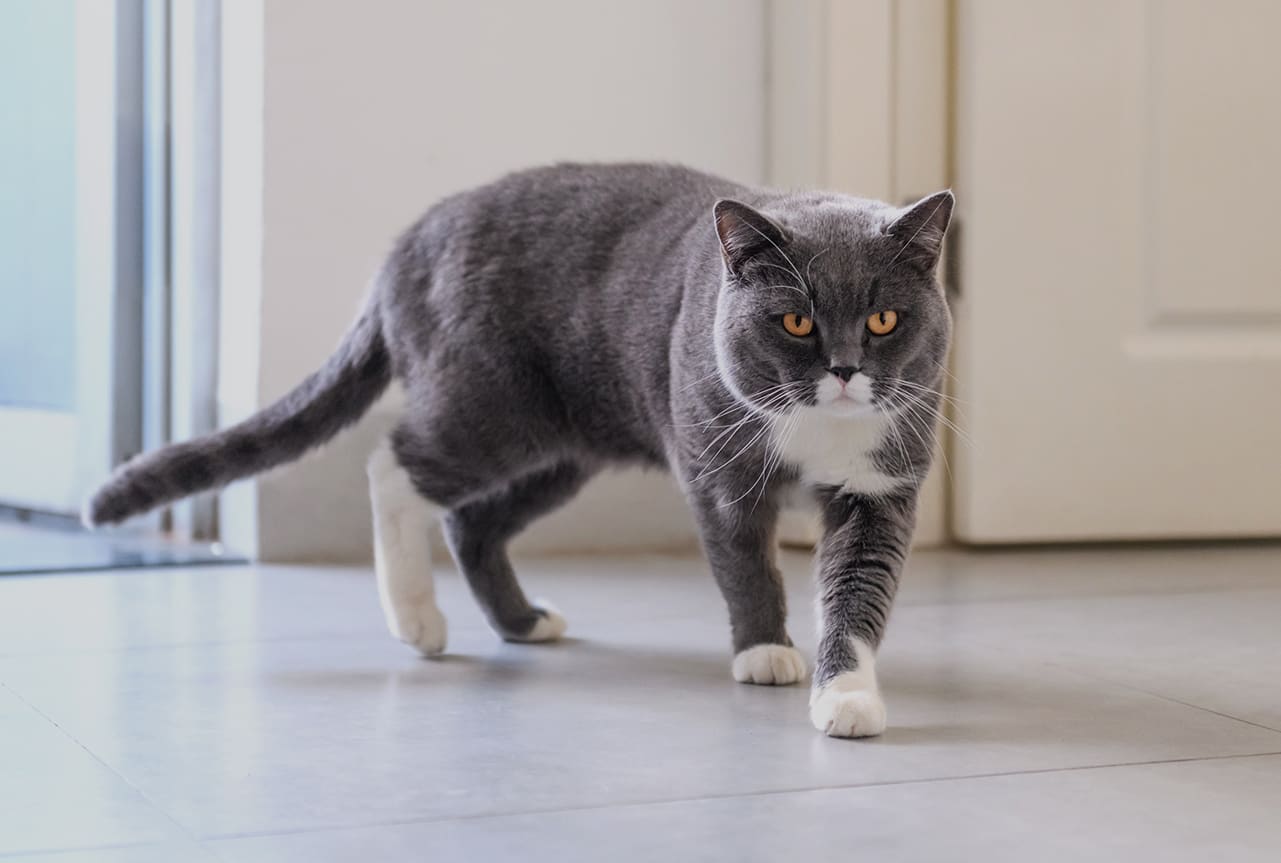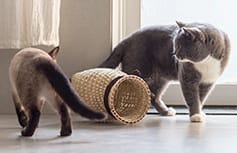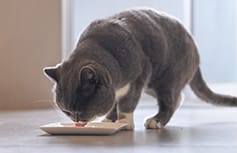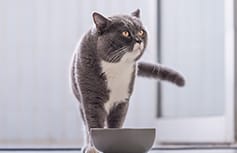Feline Blood Glucose Curves
The blood glucose curve is an ideal tool to determine the effectiveness of the insulin and identify the appropriate dose and frequency of administration. In general, maintaining blood glucose levels in a cat with diabetes between 6–16 mmol/l for the majority of the day will minimise the symptoms of diabetes and complications.
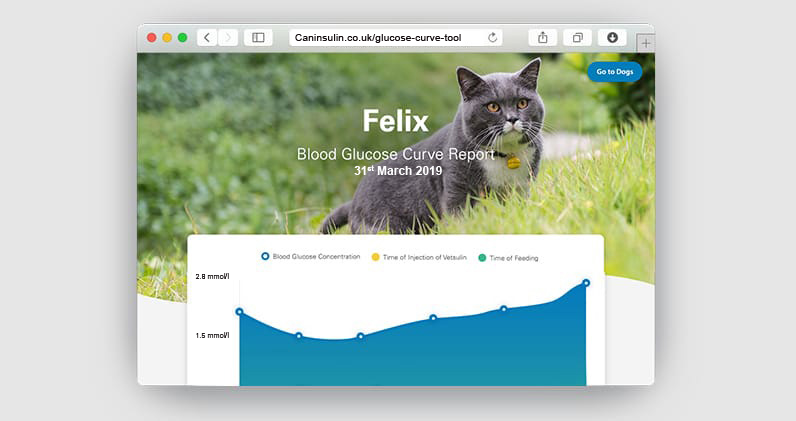
Try our online glucose curve generator.
When creating a glucose curve, remember that stress can affect the reliability of results, and the glucose curve is only one tool among others that can help diagnose and monitor diabetes mellitus. Your vet will take clinical signs (or lack thereof) into account when contemplating any change in insulin therapy. The ultimate goal in regulating a cat with diabetes is to control the clinical signs adequately so your pet can enjoy a good quality of life.
How to complete a glucose curve
Obtain the first blood sample in the morning before your cat has had its food or insulin. Blood samples are then collected every 2 hours throughout the day, for 12 hours if possible. This data is then plotted on a graph to generate a curve. Your vet will use the blood glucose curve to determine if any adjustments need to be made to the insulin dosage and feeding regimens.
Measuring blood glucose
Two different options:
Blood samples can be taken to measure blood glucose. Two methods of taking blood samples to produce glucose curves include:
1. Collection by your vets of a venous blood sample from a peripheral vein. Plasma glucose concentrations are measured in a laboratory or by an in-clinic analyser.
2. At home, or in clinic collection of a drop of capillary blood from the ear flap (pinna), analysed using a handheld glucometer.
- Glucometers should be calibrated specifically for dogs and cats because of the difference in the ratios of glucose in plasma and red blood cells from humans.
- Readings may vary as much as 15% from samples submitted to the laboratory.
- Handheld meters are reasonably accurate. If a reading seems unusual or does not match the clinical signs, a second reading should be taken or another method used to confirm the blood glucose measurement.
Continuous Glucose Monitoring
Continuous glucose monitoring (CGM) is an alternative approach which is increasingly commonly used to monitor control in diabetic pets. Instead of using blood samples, this type of monitoring utilises a tiny sensor that passes just below the skin, attached by way of an adhesive pad. With glucose measurements read by mobile device such as a smartphone.
This technique often proves a convenient alternative way to get clearer insights into the quality of control of the diabetes over a number of days. Rather than measuring blood glucose it assesses glucose in interstitial fluid (which bathes the body’s cells). Some fur-clipping is likely to be needed and some pets may attempt to remove the device, but overall it can often prove a less invasive and less stressful method of establishing longer term trending. In many circumstances, it can be more informative, practical and cost effective than repeated blood glucose curves.
How to interpret a glucose curve
Your vet can help explain the glucose curve, and how they interpret these readings based on your pet.
The glucose curve helps determine:
- Insulin effectiveness. Maximum and minimum blood glucose levels, which should ideally be between 5 and 14 mmol/l
Glucose nadir (lowest level) goal:
- 5-8 mmol/l
Duration of insulin effectiveness:
- The duration of insulin action is measured from the time of Caninsulin® injection, followed by a fall in blood glucose concentration, to the time that blood glucose exceeds the renal threshold concentration of 14-16 mmol/l in cats. Because stress can increase the blood glucose values in cats, sometimes other blood tests are utilised to help manage the diabetic cat.
Management goals
The aim of treatment is to alleviate clinical signs of diabetes. To achieve this goal, vets aim to keep blood glucose concentrations below the renal threshold (which is < 14-16 mmol/l) and avoid hypoglycaemia. They do this by trying to maintain the blood glucose concentrations roughly between 6-16 mmol/l in cats for the majority of the day.1
Treatment is successful when the clinical signs of diabetes mellitus improve without inducing hypoglycaemia (low blood glucose levels).
Routine rechecks
After your cat stabilises successfully, your vets may perform routine rechecks every 3 to 6 months. Careful monitoring and control will help to limit long-term complications.
Ideal blood glucose curve
The graph below demonstrates an ideal blood glucose curve for a cat receiving Caninsulin® twice daily. Not all blood glucose curves will be ideal at first. It is important not to adjust Caninsulin® dose without consulting with your vet first.
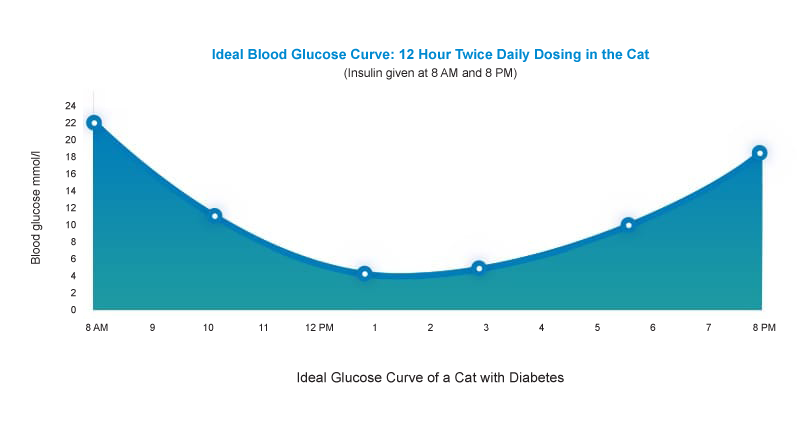
Tracking Results
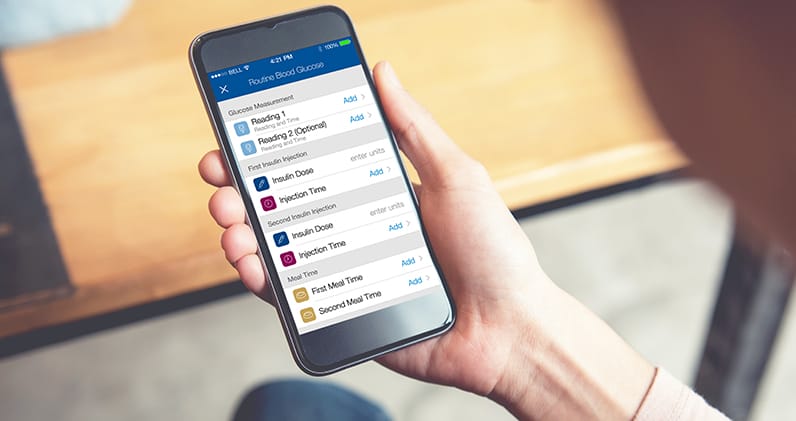
Recording your cat’s results is important to properly manage care.
Tracking Tools & Resources
1. Pet Diabetes Tracker app
Review and keep important information to manage diabetes.


2. Blood Glucose Curve Tool
Review and keep important information to manage diabetes.
3. Helpful Downloads
Additional resources to understand and manage cat diabetes.
Next Article: What is Feline Diabetes? >
Further Reading
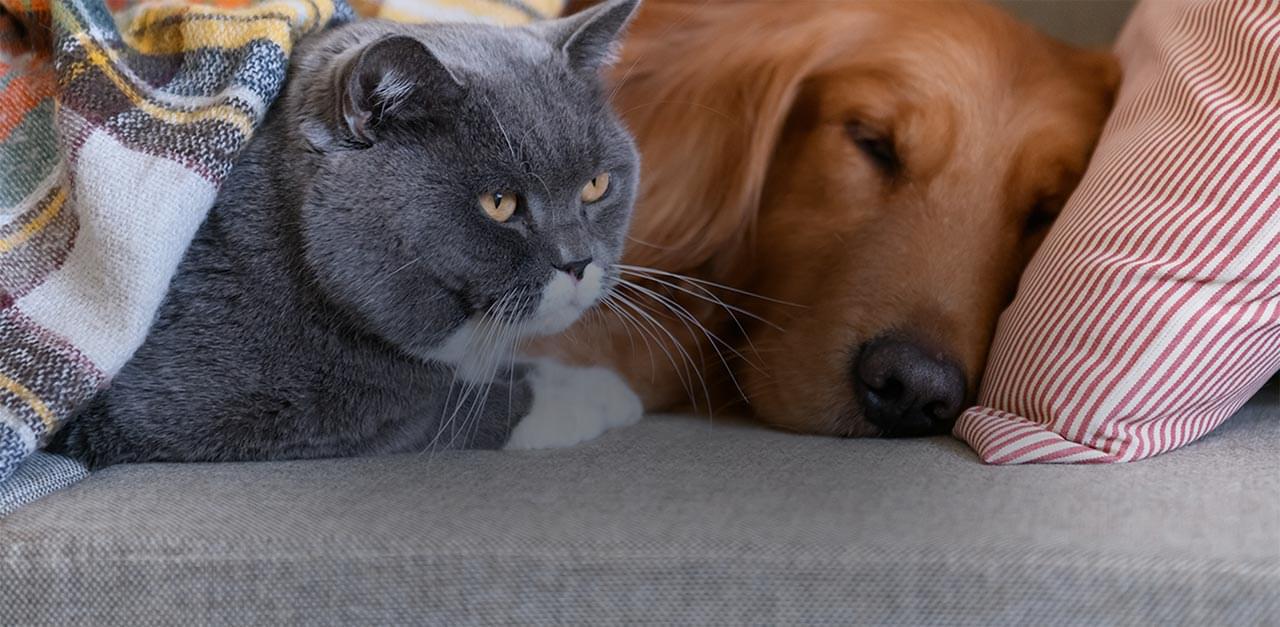
Talk to Your Vet Today
to learn more about pet diabetes, and how cats and dogs can lead a happy,
healthy life with proper management


